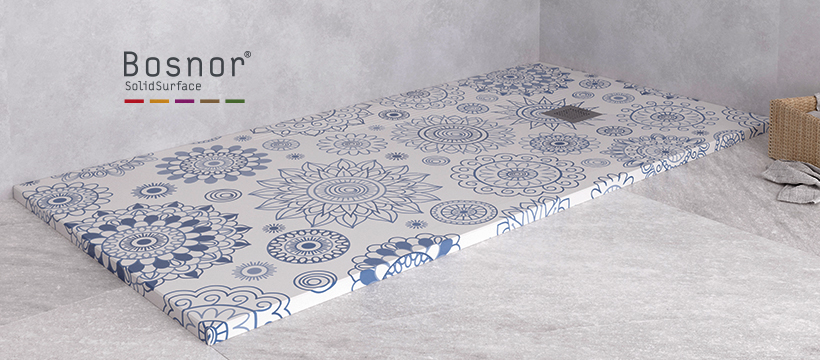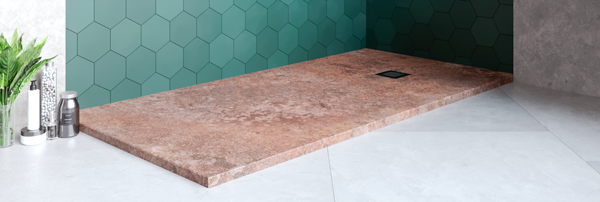Deco Collection (Art deco)
A few days ago we previewed some models from the brand new series that Bosnor is about to launch on the market. Today we offer a little more information and we explain how the series got its name and what the concept of our new Print catalogue will be.
The Nostalgy and Loop models will be our new additions, which we already presented to you and you voted for on our Facebook Page, with excellent results. We are also adding to our collection the Lines, Mosaic and Pyramid models that you will have already seen on our website, but where do these ideas and the concept for the Deco collection come from?
As you know, the Bosnor brand manufactures shower trays with unique and exclusive designs, using a sublimation digital printing technique patented by BOSNOR. The printing process, with very high mechanical resistance, penetrates the shower tray ensuring the print is permanently fixed.
The results are true works of art, which you will see in the most exclusive bathrooms. An art form which, although not available to everyone, can be obtained today thanks to Bosnor. Our concept, the artistic element, provides added value to our shower trays, which in addition to their certified high quality, are solid, compact, resistant and offer greater safety due to their anti-slip surface.
We’re excited to share with you this video which tells the story of where Deco collection’s name comes from; for this collection included in our latest catalogue:
Art Deco:
Decorative art style developed in the inter-war period, between 1920 and 1939, in Europe and America. It reached its maximum splendour at the International Exhibition of Decorative Arts of Paris in 1925. It is characterised by ornamental profusion, luxury materials and the frequent use of geometric and plant motifs.
Art Deco, in summary, sought decoration over functionality.
- Art Deco is mainly based on the prevailing geometry of the cube, the sphere and the straight line, in addition to the zigzag.
- It aims to represent abstractions seen in nature, radiant luminous rays, aquatic fluids, undulating clouds…
- Faunal representation with reference to qualities such as speed and use gazelles, greyhounds, panthers, herons, etc.
- Representation of phytomorphic elements; flowers, cacti, palm trees are represented by geometric delineations.
- Art Deco uses images from sources in ascending ways.
- Use of new materials such as Bakelite, chrome and plastic, noble wood, ebony and rosewood, natural skins, shark and hawksbill.
- Motifs from pre-Hispanic cultures such as the Aztec, Mayan or Inca cultures as well as motifs inspired by the objects of the archaeological discoveries of Egypt, Mesopotamia, the Vikings or African and Indian cultures.
- In architecture, in addition to geometric forms, the style resorted to step by step finishes with maritime prows that hold masts serving as antlers; arches and octagonal doors and luxurious materials such as marble, granite and aluminium complete the decorative look.
- The human figure of gymnasts, workers, city dwellers, wearing the “look” of the time is used, together with the figure of the resolute woman who participates in economic production, wearing a more daring fashionable style, with short hair (the “garzón“) who smokes and enjoys cocktails, denoting her social freedom.
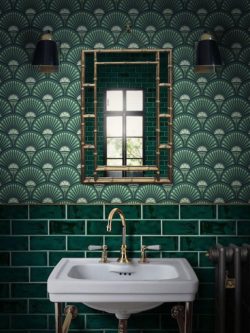
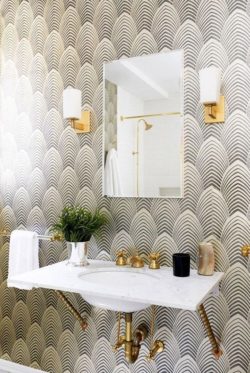
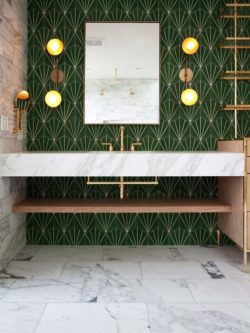
Images from Pinterest

